DLW21HN900SQ2L CMC 330MA 2LN 90 OHM SMD: Datasheet, Features, and Equivalent Circuit
CMC 330MA 2LN 90 OHM SMD
DLW21HN900SQ2L is a mode choke. This article is going to talk about applications, features, and more details about DLW21HN900SQ2L.
- Overview of DLW21HN900SQ2L
- DLW21HN900SQ2L Features
- Specifications
- DLW21HN900SQ2L Dimensions
- DLW21HN900SQ2L Equivalent Circuit
- DLW21HN900SQ2L Product Data
- DLW21HN900SQ2L CAD Model
- DLW21HN900SQ2L Applications
- DLW21HN900SQ2L Package information
- DLW21HN900SQ2L Manufacturer
- Popularity by Region
- Datasheet PDF
- Parts with Similar Specs
Overview of DLW21HN900SQ2L
The DLW21HN900SQ2L Common Mode Choke Coils from Murata Electronics have a high impedance in the high-frequency region for better noise reduction. These choke coils feature a low-profile winding construction. To provide reliable transmission of high-speed signals, the DLW series employs characteristic impedance matching. Choke coils are available in two grades: general use and automotive grade AEC-Q200. They come in a variety of case sizes with tight, low-profile construction and an ultra-high self-resonance frequency. Murata's DLW Common Mode Choke Coils are perfect for suppressing power line noise in powertrain and safety system ECUs (ECUs).
DLW21HN900SQ2L Features
Low profile and small size (2.0x1.2x0.9mm). For small and thin sets, excellent noise reduction is available.
At high frequencies, a high common-mode impedance results in effective noise reduction.
Depending on the noise level and signal frequency, various common-mode impedances ranging from 67 to 180 ohm can be employed.
DLW21H is suitable for differential signal lines such as USB2.0, IEEE1394, and LVDS because its high coupling ensures that high-speed signal transmission is not distorted. (DLW21HN900SQ2 USB2.0 )
The small size allows for a higher density of mounting.
Specifications
- TypeParameter
- Lifecycle Status
Lifecycle Status refers to the current stage of an electronic component in its product life cycle, indicating whether it is active, obsolete, or transitioning between these states. An active status means the component is in production and available for purchase. An obsolete status indicates that the component is no longer being manufactured or supported, and manufacturers typically provide a limited time frame for support. Understanding the lifecycle status is crucial for design engineers to ensure continuity and reliability in their projects.
IN PRODUCTION (Last Updated: 1 month ago) - Factory Lead Time10 Weeks
- Mount
In electronic components, the term "Mount" typically refers to the method or process of physically attaching or fixing a component onto a circuit board or other electronic device. This can involve soldering, adhesive bonding, or other techniques to secure the component in place. The mounting process is crucial for ensuring proper electrical connections and mechanical stability within the electronic system. Different components may have specific mounting requirements based on their size, shape, and function, and manufacturers provide guidelines for proper mounting procedures to ensure optimal performance and reliability of the electronic device.
Surface Mount - Mounting Type
The "Mounting Type" in electronic components refers to the method used to attach or connect a component to a circuit board or other substrate, such as through-hole, surface-mount, or panel mount.
Surface Mount - Package / Case
refers to the protective housing that encases an electronic component, providing mechanical support, electrical connections, and thermal management.
Horizontal, 4 PC Pad - Weight8.986799mg
- Voltage Rated
RATED voltage is the voltage on the nameplate - the "design point" for maximum power throughput and safe thermal operation.
50V - Operating Temperature
The operating temperature is the range of ambient temperature within which a power supply, or any other electrical equipment, operate in. This ranges from a minimum operating temperature, to a peak or maximum operating temperature, outside which, the power supply may fail.
-40°C~85°C - Packaging
Semiconductor package is a carrier / shell used to contain and cover one or more semiconductor components or integrated circuits. The material of the shell can be metal, plastic, glass or ceramic.
Tape & Reel (TR) - Series
In electronic components, the "Series" refers to a group of products that share similar characteristics, designs, or functionalities, often produced by the same manufacturer. These components within a series typically have common specifications but may vary in terms of voltage, power, or packaging to meet different application needs. The series name helps identify and differentiate between various product lines within a manufacturer's catalog.
DLW21 - Size / Dimension
In electronic components, the parameter "Size / Dimension" refers to the physical dimensions of the component, such as its length, width, and height. These dimensions are crucial for determining how the component will fit into a circuit or system, as well as for ensuring compatibility with other components and the overall design requirements. The size of a component can also impact its performance characteristics, thermal properties, and overall functionality within a given application. Engineers and designers must carefully consider the size and dimensions of electronic components to ensure proper integration and functionality within their designs.
0.079Lx0.047W 2.00mmx1.20mm - Tolerance
In electronic components, "tolerance" refers to the acceptable deviation or variation from the specified or ideal value of a particular parameter, such as resistance, capacitance, or voltage. It indicates the range within which the actual value of the component can fluctuate while still being considered acceptable for use in a circuit. Tolerance is typically expressed as a percentage or a specific value and is important for ensuring the accuracy and reliability of electronic devices. Components with tighter tolerances are more precise but may also be more expensive. It is crucial to consider tolerance when selecting components to ensure proper functionality and performance of the circuit.
25% - JESD-609 Code
The "JESD-609 Code" in electronic components refers to a standardized marking code that indicates the lead-free solder composition and finish of electronic components for compliance with environmental regulations.
e3 - Pbfree Code
The "Pbfree Code" parameter in electronic components refers to the code or marking used to indicate that the component is lead-free. Lead (Pb) is a toxic substance that has been widely used in electronic components for many years, but due to environmental concerns, there has been a shift towards lead-free alternatives. The Pbfree Code helps manufacturers and users easily identify components that do not contain lead, ensuring compliance with regulations and promoting environmentally friendly practices. It is important to pay attention to the Pbfree Code when selecting electronic components to ensure they meet the necessary requirements for lead-free applications.
yes - Part Status
Parts can have many statuses as they progress through the configuration, analysis, review, and approval stages.
Active - Moisture Sensitivity Level (MSL)
Moisture Sensitivity Level (MSL) is a standardized rating that indicates the susceptibility of electronic components, particularly semiconductors, to moisture-induced damage during storage and the soldering process, defining the allowable exposure time to ambient conditions before they require special handling or baking to prevent failures
1 (Unlimited) - Termination
Termination in electronic components refers to the practice of matching the impedance of a circuit to prevent signal reflections and ensure maximum power transfer. It involves the use of resistors or other components at the end of transmission lines or connections. Proper termination is crucial in high-frequency applications to maintain signal integrity and reduce noise.
SMD/SMT - ECCN Code
An ECCN (Export Control Classification Number) is an alphanumeric code used by the U.S. Bureau of Industry and Security to identify and categorize electronic components and other dual-use items that may require an export license based on their technical characteristics and potential for military use.
EAR99 - Resistance
Resistance is a fundamental property of electronic components that measures their opposition to the flow of electric current. It is denoted by the symbol "R" and is measured in ohms (Ω). Resistance is caused by the collisions of electrons with atoms in a material, which generates heat and reduces the flow of current. Components with higher resistance will impede the flow of current more than those with lower resistance. Resistance plays a crucial role in determining the behavior and functionality of electronic circuits, such as limiting current flow, voltage division, and controlling power dissipation.
90Ohm - Terminal Finish
Terminal Finish refers to the surface treatment applied to the terminals or leads of electronic components to enhance their performance and longevity. It can improve solderability, corrosion resistance, and overall reliability of the connection in electronic assemblies. Common finishes include nickel, gold, and tin, each possessing distinct properties suitable for various applications. The choice of terminal finish can significantly impact the durability and effectiveness of electronic devices.
Tin (Sn) - Composition
Parameter "Composition" in electronic components refers to the specific materials and substances used in the construction of the component. It encompasses the chemical and physical elements that make up the component, influencing its electrical, thermal, and mechanical properties. The composition can affect the performance, reliability, and durability of the component in various applications. Understanding the composition is essential for optimizing the design and functionality of electronic devices.
Wirewound - Additional Feature
Any Feature, including a modified Existing Feature, that is not an Existing Feature.
OPEN MAGNETIC ONE CIRCUIT TYPE - HTS Code
HTS (Harmonized Tariff Schedule) codes are product classification codes between 8-1 digits. The first six digits are an HS code, and the countries of import assign the subsequent digits to provide additional classification. U.S. HTS codes are 1 digits and are administered by the U.S. International Trade Commission.
8504.50.80.00 - Packing Method
The packing method in electronic components refers to the technique used to package and protect the component during shipping and handling. It encompasses various forms including tape and reel, tray, tube, or bulk packaging, each suited for different types of components and manufacturing processes. The choice of packing method can affect the ease of handling, storage, and the efficiency of assembly in automated processes. Additionally, it plays a crucial role in ensuring the reliability and integrity of the components until they are used in electronic devices.
TAPE AND REEL - Shielding
Shielding in electronic components refers to the practice of enclosing or surrounding sensitive electronic circuits or components with a conductive material to protect them from electromagnetic interference (EMI) or radio frequency interference (RFI). The shielding material acts as a barrier that blocks or absorbs unwanted electromagnetic signals, preventing them from affecting the performance of the electronic device. Shielding can be achieved using materials such as metal enclosures, conductive coatings, or shielding tapes. Proper shielding is essential in electronic design to ensure the reliable operation of electronic devices in environments where electromagnetic interference is present.
Unshielded - Number of Functions2
- Depth
In electronic components, "Depth" typically refers to the measurement of the distance from the front to the back of the component. It is an important parameter to consider when designing or selecting components for a project, as it determines how much space the component will occupy within a circuit or device. The depth of a component can impact the overall size and layout of the circuit board or enclosure in which it will be installed. It is usually specified in millimeters or inches and is crucial for ensuring proper fit and functionality within the intended application.
1.2mm - Current Rating
Current rating is the maximum current that a fuse will carry for an indefinite period without too much deterioration of the fuse element.
330mA - Frequency
In electronic components, the parameter "Frequency" refers to the rate at which a signal oscillates or cycles within a given period of time. It is typically measured in Hertz (Hz) and represents how many times a signal completes a full cycle in one second. Frequency is a crucial aspect in electronic components as it determines the behavior and performance of various devices such as oscillators, filters, and communication systems. Understanding the frequency characteristics of components is essential for designing and analyzing electronic circuits to ensure proper functionality and compatibility with other components in a system.
100MHz - Military Standard
Military Standard in electronic components refers to a set of guidelines and specifications established by the military for the design, manufacturing, and testing of electronic devices used in military applications. These standards ensure that the components meet specific requirements for reliability, durability, performance, and environmental conditions. Components that meet military standards are often more rugged and capable of withstanding harsh operating conditions such as extreme temperatures, vibrations, and electromagnetic interference. Adhering to military standards helps to ensure the quality and consistency of electronic components used in critical military systems and applications.
Not - Case Code (Imperial)
The term "Case Code (Imperial)" in electronic components refers to a standardized system used to specify the physical dimensions and package types of components, particularly capacitors and resistors. This code helps manufacturers and engineers identify the size and form factor of the component, ensuring compatibility with circuit designs and PCB layouts. In the context of electronic components, the Case Code (Imperial) typically follows a numerical format that indicates the length and width of the component in inches. For example, a Case Code of 1206 signifies a component that measures 0.12 inches by 0.06 inches. This coding system is essential for selecting the correct components for specific applications, as it provides a quick reference to the physical characteristics of the part, including its footprint and mounting style.
0805 - Test Frequency
a statistical procedure for assessing data that contain counts or the numbers of occurrences of various categories or classes.
100MHz - Impedance
In electrical engineering, impedance is the opposition to alternating current presented by the combined effect of resistance and reactance in a circuit.
90Ohm - Current
In electronic components, "Current" refers to the flow of electric charge through a conductor or semiconductor material. It is measured in amperes (A) and represents the rate at which electric charge is moving past a specific point in a circuit. Current is a crucial parameter in electronics as it determines the amount of power being consumed or delivered by a component. Understanding and controlling current is essential for designing and operating electronic circuits efficiently and safely. In summary, current is a fundamental electrical quantity that plays a key role in the functionality and performance of electronic components.
330mA - Max DC Current
Max DC Current refers to the maximum amount of direct current (DC) that an electronic component can safely handle without being damaged. This parameter is crucial for determining the operational limits of the component and ensuring that it functions within its specified range. Exceeding the maximum DC current rating can lead to overheating, performance degradation, or even permanent damage to the component. It is important to carefully consider this parameter when designing circuits or selecting components to ensure reliable and safe operation.
330mA - Filter Type
Filter Type in electronic components refers to the classification of filters based on their frequency response characteristics. Common types include low-pass, high-pass, band-pass, and band-stop filters, each serving different functions in signal processing. Low-pass filters allow signals below a certain cutoff frequency to pass while attenuating higher frequencies, whereas high-pass filters do the opposite. Band-pass filters permit frequencies within a specific range, while band-stop filters block frequencies within a designated range. The choice of filter type influences the performance and behavior of electronic circuits in various applications.
Signal Line - DC Current
DC current refers to the flow of electric charge in a circuit in a constant, unidirectional manner. It is the steady current that flows through a circuit without changing direction over time. DC current is typically measured in amperes (A) and is essential for powering electronic components such as resistors, capacitors, and transistors. Understanding the DC current rating of a component is crucial for ensuring proper functionality and preventing damage due to overcurrent. It is important to consider the maximum DC current that a component can handle to avoid overheating and potential failure.
330mA - Number of Lines2
- DC Resistance (DCR) (Max)
DC Resistance (DCR) (Max) in electronic components refers to the maximum allowable direct current (DC) resistance of a component, typically an inductor or a resistor. It represents the highest resistance value that the component can have when measured under DC conditions.
350mOhm - Impedance @ Frequency
Impedance @ Frequency in electronic components refers to the measurement of a component's impedance at a specific frequency. Impedance is a complex quantity that combines resistance and reactance, and it varies with frequency due to the influence of both inductive and capacitive elements within the component.
90Ohm @ 100MHz - Height900μm
- Radiation Hardening
Radiation hardening is the process of making electronic components and circuits resistant to damage or malfunction caused by high levels of ionizing radiation, especially for environments in outer space (especially beyond the low Earth orbit), around nuclear reactors and particle accelerators, or during nuclear accidents or nuclear warfare.
No - RoHS Status
RoHS means “Restriction of Certain Hazardous Substances” in the “Hazardous Substances Directive” in electrical and electronic equipment.
ROHS3 Compliant - Lead Free
Lead Free is a term used to describe electronic components that do not contain lead as part of their composition. Lead is a toxic material that can have harmful effects on human health and the environment, so the electronics industry has been moving towards lead-free components to reduce these risks. Lead-free components are typically made using alternative materials such as silver, copper, and tin. Manufacturers must comply with regulations such as the Restriction of Hazardous Substances (RoHS) directive to ensure that their products are lead-free and environmentally friendly.
Lead Free
DLW21HN900SQ2L Dimensions
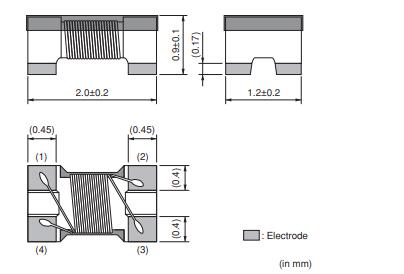
DLW21HN900SQ2L Dimensions
DLW21HN900SQ2L Equivalent Circuit
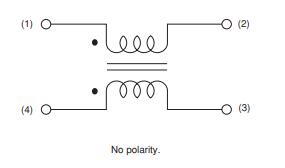
DLW21HN900SQ2L Equivalent Circuit
DLW21HN900SQ2L Product Data
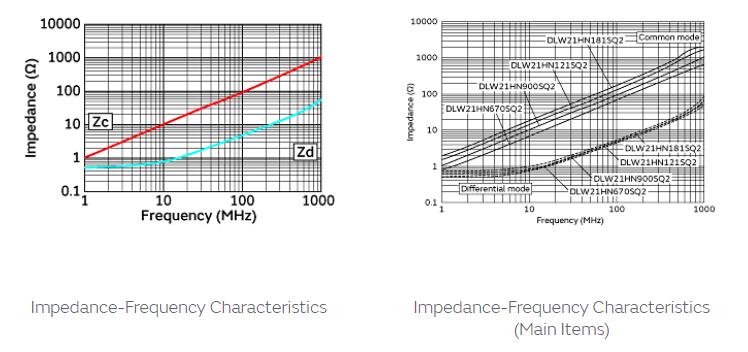
DLW21HN900SQ2L Product Data
DLW21HN900SQ2L CAD Model
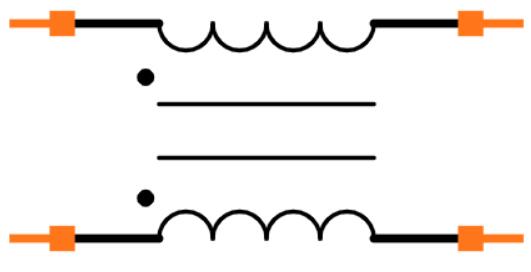
DLW21HN900SQ2L Symbol
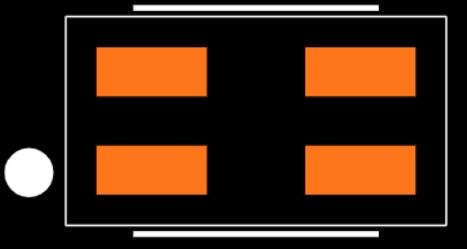
DLW21HN900SQ2L Footprint
DLW21HN900SQ2L Applications
General-purpose
High-speed and high-density digital equipment
PCs, peripherals, and telecommunications equipment
Medical equipment
Transportation equipment (trains, ships, etc.)
Undersea equipment
Data-processing equipment
Power plant control equipment
Aerospace equipment
DLW21HN900SQ2L Package information

DLW21HN900SQ2L Package information
| Packaging | Specifications | Standard Packing Quantity |
| B | Bulk(Bag) | 500 |
| L | 180mm Embossed Tape | 3000 |
DLW21HN900SQ2L Manufacturer
Murata is a world leader in the development, production, and distribution of sophisticated electronic materials, cutting-edge electronic components, and multi-functional, high-density modules. Murata innovations can be found in a variety of applications, including mobile phones, household appliances, automotive applications, energy management systems, and healthcare equipment.
Popularity by Region
Datasheet PDF
- Datasheets :
- ReachStatement :
Parts with Similar Specs
- ImagePart NumberManufacturerImpedanceTest FrequencyCurrent RatingNumber of LinesMountPart StatusTerminationView Compare
DLW21HN900SQ2L
90 Ω
100 MHz
330 mA
2
Surface Mount
Active
SMD/SMT
67 Ω
100 MHz
330 mA
2
Surface Mount
Active
SMD/SMT
90 Ω
100 MHz
400 mA
2
Surface Mount
Active
SMD/SMT
90 Ω
100 MHz
-
2
Surface Mount
Active
SMD/SMT
90 Ω
100 MHz
300 mA
2
Surface Mount
Active
-
What’s the operating temperature of DLW21HN900SQ2L?
-40°C~85°C.
What’s the packaging way of DLW21HN900SQ2L?
Tape & Reel (TR).
What’s the current rating of DLW21HN900SQ2L?
330mA.
What type of construction does the DLW Common Mode Choke Coils have?
low-profile winding.
How many grades are the DLW Common Mode Choke Coils available?
Two.
 STM32F103ZET6 Microcontroller: Specification, Pinout and Datasheet
STM32F103ZET6 Microcontroller: Specification, Pinout and Datasheet20 October 20214045
 LMR16006YDDCR: PWM DC/DC, Step-Down, Datasheet
LMR16006YDDCR: PWM DC/DC, Step-Down, Datasheet22 February 20221137
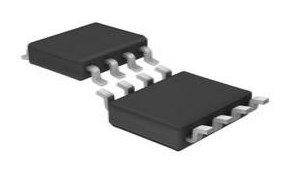 LT1013 Dual Precision Op Amp: Pinout, Equivalent and Datasheet
LT1013 Dual Precision Op Amp: Pinout, Equivalent and Datasheet19 November 20213676
![S8550 PNP SILICON TRANSISTOR[Video+FAQ]: Pinout, Circuit, and Equivalents](https://res.utmel.com/Images/Article/89fee5f9-c860-49ba-86a8-82004acbfe70.jpg) S8550 PNP SILICON TRANSISTOR[Video+FAQ]: Pinout, Circuit, and Equivalents
S8550 PNP SILICON TRANSISTOR[Video+FAQ]: Pinout, Circuit, and Equivalents21 April 20227535
 AOZ1280CI 1.2 A Simple Buck Regulator, SOT-23-6 1.5 MHz EZ Buck
AOZ1280CI 1.2 A Simple Buck Regulator, SOT-23-6 1.5 MHz EZ Buck12 February 20223456
 TIP32C Power Transistor: Pinout, Datasheet, and Circuit
TIP32C Power Transistor: Pinout, Datasheet, and Circuit08 July 20218871
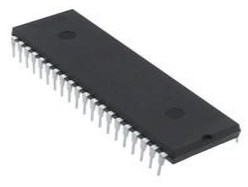 ICL7107 ADC Display Driver: Price, Application and Datasheet
ICL7107 ADC Display Driver: Price, Application and Datasheet25 August 20213102
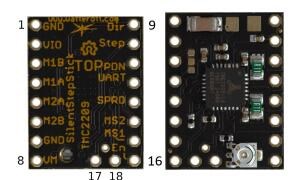 How to Interface TMC2209 Stepper Driver with Microcontroller?
How to Interface TMC2209 Stepper Driver with Microcontroller?26 November 202120216
 New Crisis in Semiconductors: Neon Gas Prices Soar 9 Times
New Crisis in Semiconductors: Neon Gas Prices Soar 9 Times21 March 20225042
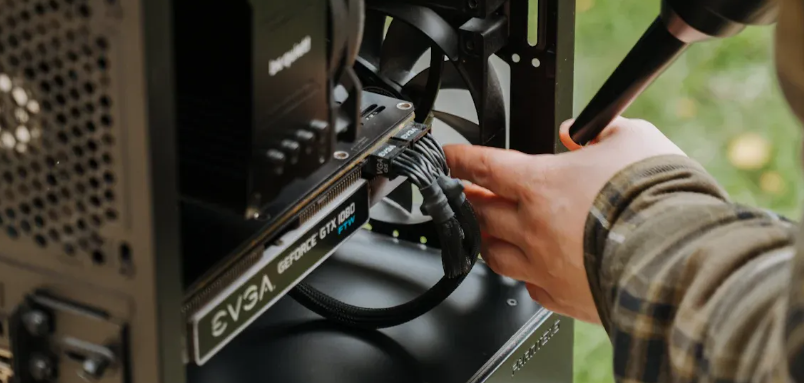 How Proper Thermal Management Extends the Life of Your Electronics
How Proper Thermal Management Extends the Life of Your Electronics18 July 2025474
 SoftBank's Arm Gears Up for the Largest IPO of 2023 Riding the AI Wave
SoftBank's Arm Gears Up for the Largest IPO of 2023 Riding the AI Wave07 September 20232241
 50 Frequently Asked Questions about Oscilloscope
50 Frequently Asked Questions about Oscilloscope22 November 202110117
 Diodes Tutorial: How to Test Diodes?
Diodes Tutorial: How to Test Diodes?22 October 20258866
 How to Design an Accurate DC Power Supply
How to Design an Accurate DC Power Supply15 October 20253064
 What is a PIN Diode?
What is a PIN Diode?04 February 20218788
 What is Relay?
What is Relay?15 November 20215204
Murata Electronics
In Stock: 53570
United States
China
Canada
Japan
Russia
Germany
United Kingdom
Singapore
Italy
Hong Kong(China)
Taiwan(China)
France
Korea
Mexico
Netherlands
Malaysia
Austria
Spain
Switzerland
Poland
Thailand
Vietnam
India
United Arab Emirates
Afghanistan
Åland Islands
Albania
Algeria
American Samoa
Andorra
Angola
Anguilla
Antigua & Barbuda
Argentina
Armenia
Aruba
Australia
Azerbaijan
Bahamas
Bahrain
Bangladesh
Barbados
Belarus
Belgium
Belize
Benin
Bermuda
Bhutan
Bolivia
Bonaire, Sint Eustatius and Saba
Bosnia & Herzegovina
Botswana
Brazil
British Indian Ocean Territory
British Virgin Islands
Brunei
Bulgaria
Burkina Faso
Burundi
Cabo Verde
Cambodia
Cameroon
Cayman Islands
Central African Republic
Chad
Chile
Christmas Island
Cocos (Keeling) Islands
Colombia
Comoros
Congo
Congo (DRC)
Cook Islands
Costa Rica
Côte d’Ivoire
Croatia
Cuba
Curaçao
Cyprus
Czechia
Denmark
Djibouti
Dominica
Dominican Republic
Ecuador
Egypt
El Salvador
Equatorial Guinea
Eritrea
Estonia
Eswatini
Ethiopia
Falkland Islands
Faroe Islands
Fiji
Finland
French Guiana
French Polynesia
Gabon
Gambia
Georgia
Ghana
Gibraltar
Greece
Greenland
Grenada
Guadeloupe
Guam
Guatemala
Guernsey
Guinea
Guinea-Bissau
Guyana
Haiti
Honduras
Hungary
Iceland
Indonesia
Iran
Iraq
Ireland
Isle of Man
Israel
Jamaica
Jersey
Jordan
Kazakhstan
Kenya
Kiribati
Kosovo
Kuwait
Kyrgyzstan
Laos
Latvia
Lebanon
Lesotho
Liberia
Libya
Liechtenstein
Lithuania
Luxembourg
Macao(China)
Madagascar
Malawi
Maldives
Mali
Malta
Marshall Islands
Martinique
Mauritania
Mauritius
Mayotte
Micronesia
Moldova
Monaco
Mongolia
Montenegro
Montserrat
Morocco
Mozambique
Myanmar
Namibia
Nauru
Nepal
New Caledonia
New Zealand
Nicaragua
Niger
Nigeria
Niue
Norfolk Island
North Korea
North Macedonia
Northern Mariana Islands
Norway
Oman
Pakistan
Palau
Palestinian Authority
Panama
Papua New Guinea
Paraguay
Peru
Philippines
Pitcairn Islands
Portugal
Puerto Rico
Qatar
Réunion
Romania
Rwanda
Samoa
San Marino
São Tomé & Príncipe
Saudi Arabia
Senegal
Serbia
Seychelles
Sierra Leone
Sint Maarten
Slovakia
Slovenia
Solomon Islands
Somalia
South Africa
South Sudan
Sri Lanka
St Helena, Ascension, Tristan da Cunha
St. Barthélemy
St. Kitts & Nevis
St. Lucia
St. Martin
St. Pierre & Miquelon
St. Vincent & Grenadines
Sudan
Suriname
Svalbard & Jan Mayen
Sweden
Syria
Tajikistan
Tanzania
Timor-Leste
Togo
Tokelau
Tonga
Trinidad & Tobago
Tunisia
Turkey
Turkmenistan
Turks & Caicos Islands
Tuvalu
U.S. Outlying Islands
U.S. Virgin Islands
Uganda
Ukraine
Uruguay
Uzbekistan
Vanuatu
Vatican City
Venezuela
Wallis & Futuna
Yemen
Zambia
Zimbabwe




















